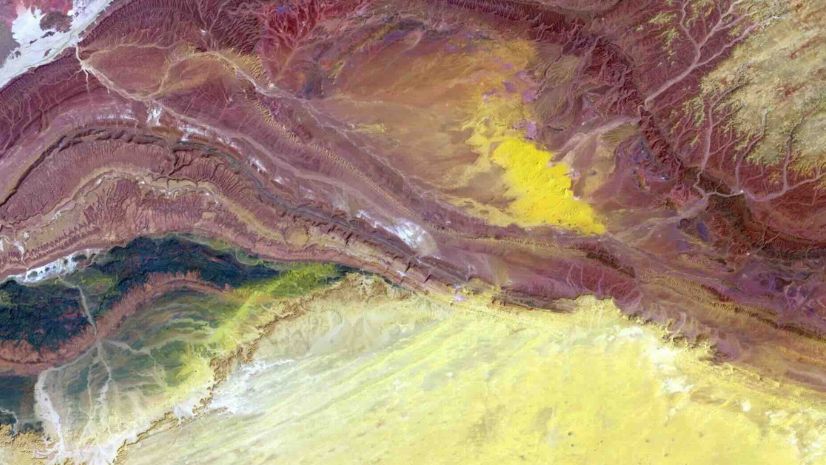It’s no secret that geography is a key factor in all things related to planning and community development. Sometimes it’s an influencing factor. Sometimes it’s the main driver for a project and the reason why the public embraces or opposes it. GIS is the tool that helps us measure, analyze, and visualize geography. For many of its early years, GIS was out of reach of many planning professionals, because it required expensive hardware, client-side software, and usually multiple weeks of training. It was an investment many planners couldn’t make, particularly if they had access to a GIS professional in their organization. But when you have people who aren’t subject matter experts in planning involved in planning-focused analysis, it’s very easy for information to get lost in translation. The emergence of web-based GIS has since evolved the role of planners in being able to efficiently access and utilize tools that help them make better, more sustainable, data-driven decisions, while simultaneously freeing up GIS staff to work on other crucial projects. Below are the five steps that utilize a modern geographic approach to planning.
Understand Neighborhood Characteristics
TED Conference founder Richard Saul Wurman has an often-repeated quote, “A map is a pattern made understandable, and understanding precedes action.” GIS helps us understand the demographics, socioeconomic characteristics, housing situation, and more about individual neighborhoods. Instead of relying on anecdotal and/or dated information, GIS provides access to thousands of authoritative variables to generate a clear picture about the aspects, resources, and needs of a community. Within the Esri platform, this is accomplished using ArcGIS Business Analyst Web App. This web-based approach provides an easy way to not only view and analyze the data, but collaborate with colleagues, property developers, elected officials, and the public, so that everyone is working off the same authoritative content.
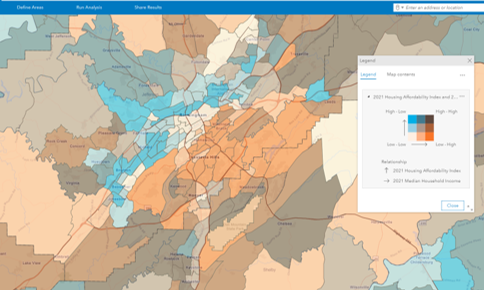
Two of the outputs within the app include infographics (both templated and customized) and reports. These provide valuable complements to the maps to help drive decisions about locating businesses, community needs, workforce information, spending behavior, and more.
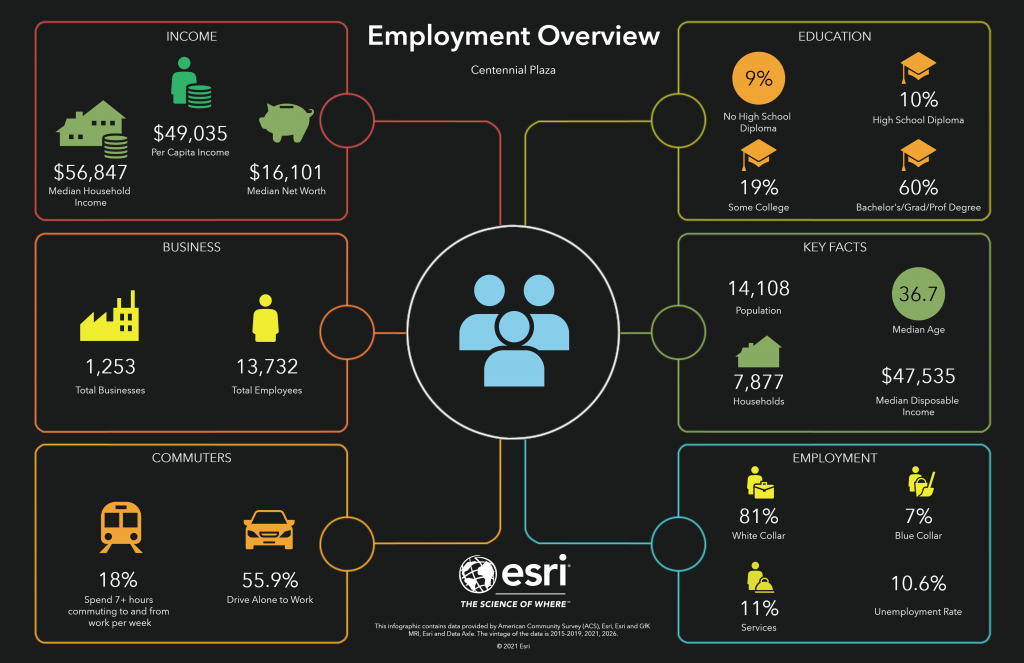
Derive Business Intelligence
The permitting system is almost always the system of record in a planning department. Usually, though, the data entry and analysis are done by a relatively small group within the organization. Despite that, there is useful information in the permitting system that can help decision-makers. This can be even more challenging with a legacy system in place, which is not uncommon, given the cost of permitting systems. Planners, administrators, and elected officials need to be able to derive business intelligence from the permitting system. Within the Esri platform, this is done with a web-based app called ArcGIS Insights.
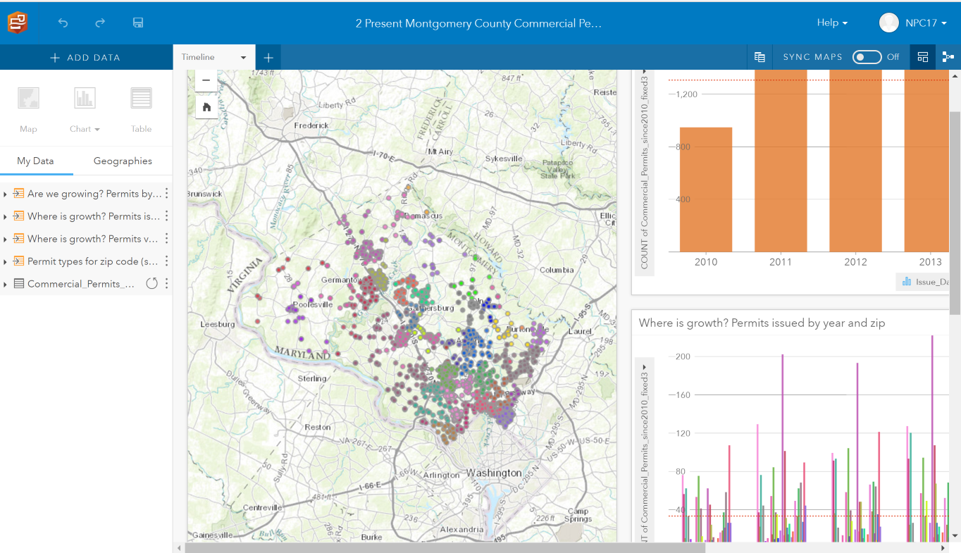
Even though the user is not a direct user of the permitting system, from a simple output from the system, they’re able to use GIS to answer questions like:
- How do the number of permits this month/year compare to last month, last year, or five years ago?
- Where is most of the activity occurring? How do the developments in one council district compare to that of a neighboring district?
- What neighborhoods and what types of permits have received the most stop work orders?
In the end, this kind of BI helps efficiently generate more value from a permitting system that a city has likely already invested hundreds of thousands of dollars over the years.
Generate Sustainable Policies
We’re increasingly seeing the role of planners increase from traditional roles of simply reviewing site plans and subdivision plats. Planners are becoming much more influential in policy development for cities and counties, whether that’s found in a comprehensive plan, housing policy, or economic development (all of which are usually intertwined). Just like understanding neighborhood characteristics, policy development works best with a data-driven approach. Esri provides a free resource called Esri Maps for Public Policy that is dedicated to raising the level of spatial and data literacy used in public policy, from economic opportunity to social equity to transportation and infrastructure to public safety. The site provides curated maps to help generate more sustainable and more justifiable policies.
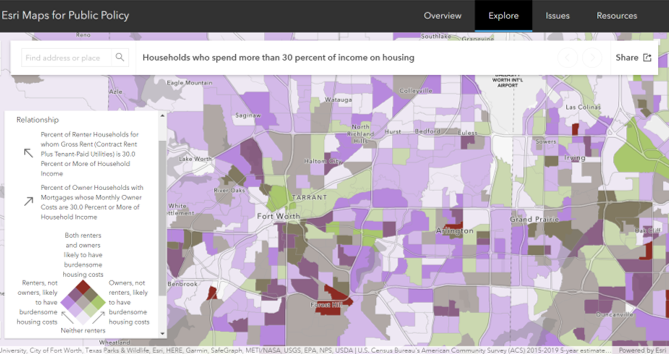
This content can exist on its own and can be simply viewed in a browser or collected and added to another app within the ArcGIS environment.
Support Civic Inclusion
Virtually everyone cares about the neighborhoods in which they live. In the past, when residents wanted to voice their concerns, their only outlet was a public hearing at a planning commission meeting or perhaps a less-frequent town hall meeting. But someone not being able to show up for the planning commission meeting on Tuesday at 7:00 doesn’t equate to them not caring about their community. Cities and counties have an obligation today to be more inclusive in finding ways for the public to engage (as well as be engaged by) their government. As stated before, location is at the heart of most of these projects, so GIS continues to remain a key component even in civic inclusion. ArcGIS Hub provides a focused, initiative-driven approach to open data, as well as delivering information and receiving feedback. That feedback could be a survey, a freeform comment, or drawing an area on a map where they’d like to see a park built. What this kind of approach to civic inclusion helps to develop is less about simply public notification and more about developing a genuine partnership between the government and the public.
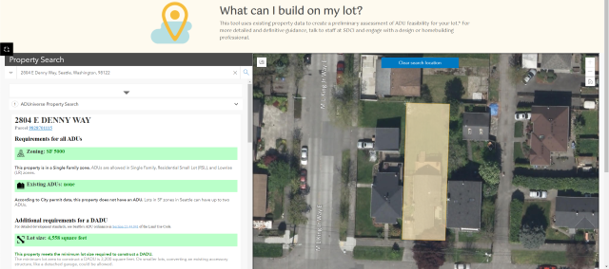
Design Sustainable Scenarios
With understanding, policy development, and civic inclusion in place, planners can more effectively design the types of plans and projects that meet the needs of the community. This can be done as a collaborative effort with developers or as a proactive way of demonstrating how a community’s needs can be met with a specific design or land use plan. ArcGIS Urban provides the 3D and 2D web-based tools for planners to quickly and efficiently develop multiple scenarios, view and measure the impact of their scenario (e.g. population, jobs, utilities, traffic, tax revenue, etc.), and compare the scenarios for review by administrators, developers, and the public. Zoning reform has become an emerging demand at many cities, particularly regarding meeting the modern housing needs of a city. ArcGIS Urban allows planners to play out and compare different zoning scenarios to show how many people and jobs could be accommodated with a new proposed zoning classification, without spending tens of thousands of dollars on consultants. It’s an effective way to streamline changes in dated codes that stifle the growth and development of neighborhoods.
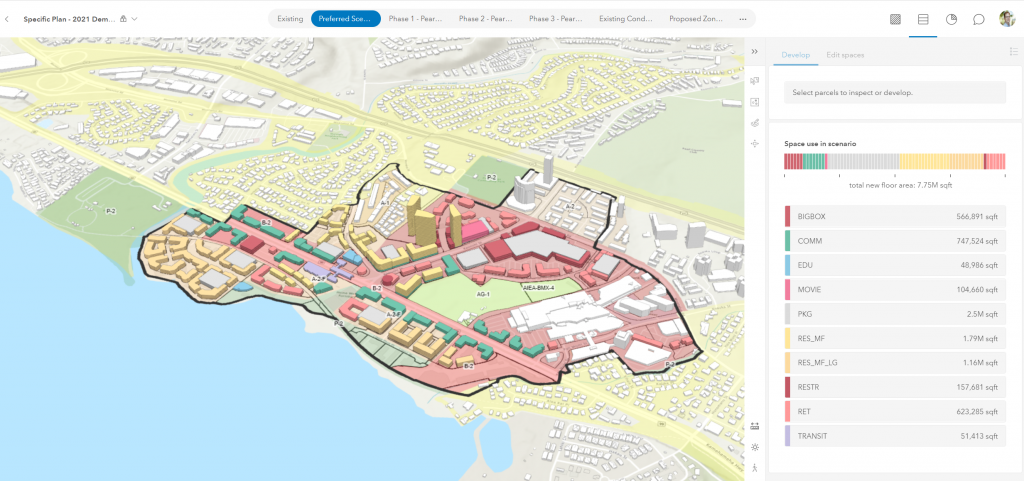
Neighborhood redevelopment and specific project developments created in ArcGIS Urban. Each development has metrics and targets tied to it to ensure you’re creating what your community needs.
Because ArcGIS Urban is part of the overall platform, the 3D web scenes created from planning these scenarios can be shared with others and integrated into CityEngine to provide a photo-realistic view of a proposed development.
We’ve seen for years that GIS is no longer a luxury in planning departments. It’s a mission-critical system. Now, the apps and tools it provides are more accessible to planning professionals than ever. The geographic approach to planning empowers data-driven decision-making, policy development, and design that meets the modern needs of your community.




